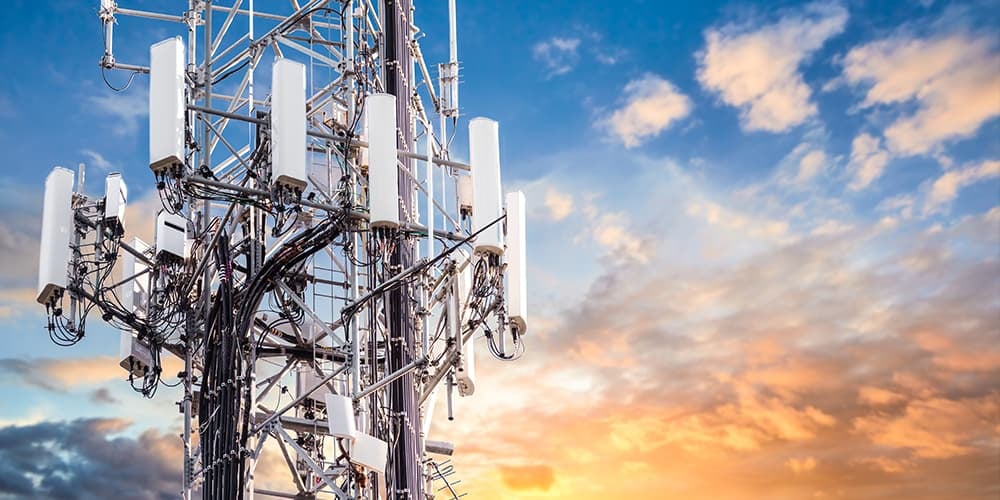
Perhaps you’ve heard of something called 5G? Who hasn’t at this point? We’ve even talked about the different names for 5G when it comes to the cellular carriers – i.e. Verizon’s Ultra Wideband 5G or T-Mobile’s Ultra Capacity 5G. However, what you may not know are what the terms SA and NSA used along with 5G mean. These are the two types of 5G and is what we’re going to look at in this blog.
5G NSA Networks: Bridging the Transition
Non-Standalone 5G networks serve as a transitional phase in the global rollout of fifth-generation cellular technology. Leveraging a hybrid approach, these networks combine a 5G Radio Access Network (RAN) with a 4G LTE core network. This hybridization enables a gradual deployment of 5G, allowing operators to upgrade their RANs before progressing to core network enhancements. Nearly all major global network operators adopted this method, providing a faster transition to 5G than a standalone approach.
Key Characteristics of 5G NSA Networks:
- Introduction of New Spectrums: NSA networks boost capacity and delivery efficiency by introducing new 5G spectrums.
- Maximization of LTE Base: These networks maximize the use of existing LTE infrastructure, facilitating a smoother transition.
- LTE Anchor Requirement: Control plane communication and mobility management depend on LTE anchors within NSA networks.
- 5G Evolved Packet Core: The presence of a 5G Evolved Packet Core enables advanced functionalities like video streaming, augmented reality (AR), virtual reality (VR), and immersive media experiences.
- Opportunities for New Use Cases: NSA networks open doors to innovative use cases such as Critical IoT, expanding the possibilities of connected devices.
5G SA Networks: Unleashing the Full Potential
In contrast, Standalone 5G networks represent the pinnacle of 5G evolution. With end-to-end networks boasting 5G cores, SA networks fully realize the benefits of 5G, including ultra-low latency, massive capacity, faster speeds, heightened security, and improved reliability. Importantly, SA networks provide access to all three key 5G service categories: Enhanced Mobile Broadband (eMBB), Ultra-Reliable and Low Latency Communications (URLLC), and Massive Machine-Type Communications (mMTC).
Key Characteristics of 5G SA Networks:
- Target 5G Architecture: SA networks offer a simplified Radio Access Network (RAN) and device architecture, aligning with the ultimate vision of 5G.
- Cloud-Native 5G Core: The introduction of a new cloud-native 5G Core enhances network capabilities, paving the way for advanced services.
- Ultra-Low Latency and High Reliability: SA networks deliver ultra-low latency and high reliability, crucial for applications requiring real-time responsiveness.
- Enhanced Security: Features like end-to-end encryption and network slicing enhance security, ensuring the integrity of data transmission.
- Same 5G Coverage for Low Band: SA networks are the only option providing consistent 5G coverage across low bands, ensuring a seamless transition from legacy systems.
How 5G SA Supports Network Slicing
One of the groundbreaking features of 5G SA networks is the ability to support network slicing. This functionality becomes particularly powerful when 5G routers align with current chipsets. Network slicing involves dividing the network into logical and independent slices, each aligned with the service categories of 5G. These slices can be tailored to meet diverse application needs, supporting public safety and catering to unique enterprise requirements.
Navigating the Future of 5G
In the dynamic landscape of 5G, the choice between NSA and SA networks holds strategic significance for service providers. While NSA networks provide a pragmatic stepping stone for early adoption, SA networks unlock the full potential of 5G, offering a comprehensive suite of features and capabilities. However, as the industry marches towards the future of hyper-connectivity, it is imperative to acknowledge and address potential challenges associated with the evolution of SA 5G networks. These challenges may include infrastructure costs, interoperability issues, and the need for substantial investments in technology upgrades. Nevertheless, overcoming these hurdles will be crucial to realizing the transformative benefits that SA 5G promises, ensuring that the transition to the next generation of cellular networks is not only seamless but also sustainable in the face of emerging complexities.


